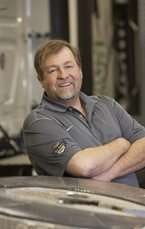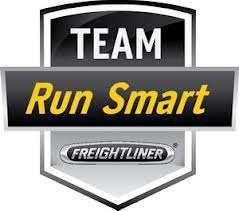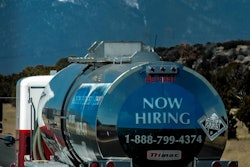
If you’ve missed it as yet, Clark posted yesterday via his new-ish Freightliner Team Run Smart blog (his first post was earlier in February, there joining two other Channel 19 semi-regulars and Trucking Solutions Group members in Henry Albert and Linda Caffee, among other owner-operators) a dissection of the systemic issues around the much-ballyhooed “driver shortage” near-perfect in its presentation as, well, a conversation between two strangers in a bar.
 Jeff Clark and four other owner-operators are blogging via Freightliner’s new initiative to highlight owner-operator business issues and their new equipment. Find them all here.
Jeff Clark and four other owner-operators are blogging via Freightliner’s new initiative to highlight owner-operator business issues and their new equipment. Find them all here.It not only makes the points that Clark and others have long been making about the so-called “shortage” — namely that it’s best understood as a pay or rate shortage with long-in-the-making dynamics driving it — but it does so with quite excellent humor. For the first part, get on over to Clark’s blog, where an economist and recruiter get the niceties over with, describing what they do. The economist of course is “never wrong,” he says, because:
We economists like to use the phrase “all things being equal.” Of course, all things are never equal, so we are never wrong. But let me try another example: You walk into a Cadillac dealer with $30,000 in cash and ask to buy a new Escalade. The dealer turns down your offer. Do you walk out of the dealer telling everyone who will listen that there is a shortage of Escalades?
But of course not, the recruiter says. “A new Cadillac Escalade would be worth way more that $30,000.”
Apply those same principles to the driver market, says the economist, and the recruiter begins to see the point.
Clark cut off the conversation at that point (again, find it here) but offered up the remainder to those interested — including, well, me. Following find the rest in its entirety:
Recruiter: … If we can’t get enough drivers we simply aren’t paying enough.
Economist: Yes, but there are more factors than just money. Tell me: what are some of the things you do to recruit quality drivers?
R: Last year we put a model in a bikini and put her on billboards and in our magazine ads.
E: How did that work?
R: Not so good — a few drivers called and asked to talk to the bikini-wearing recruiter. We told them that she was just a model and did not actually work here, and they hung up. A few of the drivers asked to see the settlement sheets to see what our guys were making. Then they never called back. We did get one driver to sign on immediately, but the bank repossessed his truck.
E: So have you tried extra incentives to attract these drivers.
R: Yes — we have been very innovative. In fact, we pay our drivers detention automatically after 2 hours at a shipper.
E: What do you pay them for the first 2 hours?
R: Nothing
E: Don’t the fair-labor laws say that you have to pay them.
R: No, interstate workers are exempted from many fair labor laws. Those laws have been in place since FDR.
E: Wow. So what is your turnover rate?
R: Pretty good. Just under 100 percent!
E: That’s good?
R: Yes, the industry average is over 100%
E: Why do you think the industry turnover rate is over 100 percent?
R: Oh, a lot of reasons. Sometimes, we even have to let good drivers go. We had one last week who got a speeding ticket in a construction zone. It was his first moving violation in over 3 million miles, but we had to let him go.
E: That messed up his record that bad?
R: No, the D.A. reduced the charges to a nonmoving violation, but it messed up our CSA score.
E: So a driver was accused of his first moving violation in 3,000,000 miles but not convicted and you fired him?
R: Yes, the new CSA rules are tough. The government even invited Mexican carriers into the U.S. and then paid for their electronic logs and they wouldn’t come.
E: That is tough, but it can’t be the only reason to explain the turnover rate.
R: No, like I said there are a lot of reasons. Recruiters tend to promise drivers the moon just to get them in the door. Then they give them the same as everyone else in the industry. We even lost one driver to a company that promised to pay him for every mile he drove.
E: Wait — you don’t pay a driver for every mile they drive?
R: No — really, nobody does. We pay them on an antiquated system that was designed to standardize the shortest distance from post office to post office.
E: You mean zip code to zip code?
R: This system was invented before the zip code.
E: Really? So are all of these routes legal for truckers to run? And really, man, the GPS in my car can immediately calculate the distance from door to door. Why don’t you pay them door to door?
R: No, most of these systems just calculate the shortest distance, and the industry standard is hard to change. We just can’t go into a customer and tell them that the distance between two points has increased since last year.
E: Now I see why there is a driver shortage.










